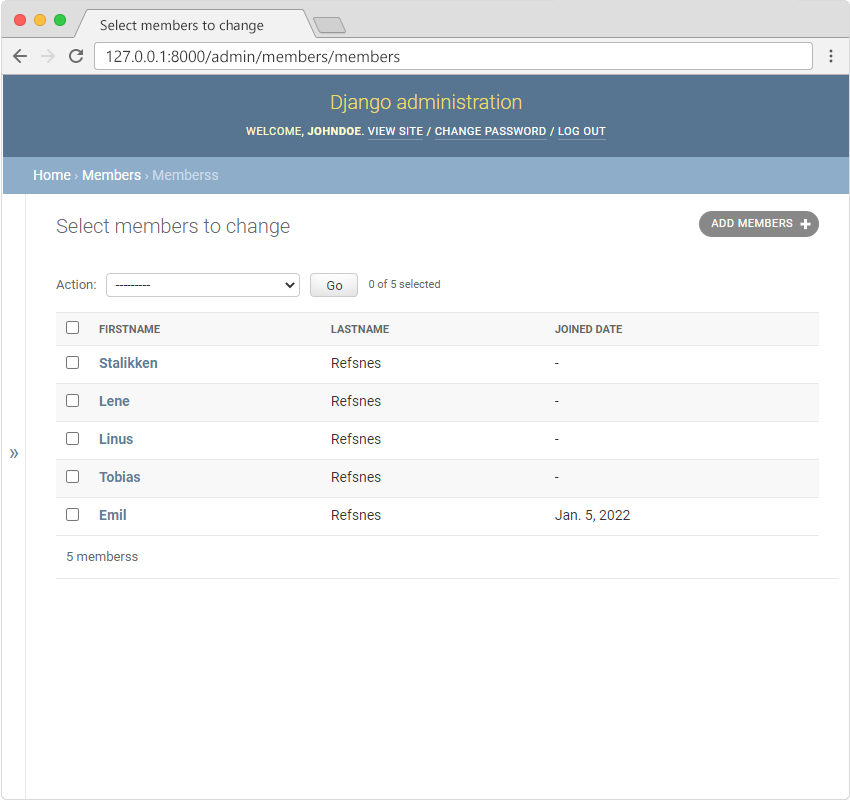Launching a Minimum Viable Product (MVP) is a strategic approach that allows startups and businesses to validate their ideas, gather user feedback, and iterate on their product.
Django, a powerful and versatile Python web framework, provides an excellent foundation for building a functional and scalable MVP.
In this informative article, we will explore the step-by-step process of building an MVP with Django, from conceptualization to deployment. By leveraging Django's robust features and rapid development capabilities, entrepreneurs can efficiently bring their vision to life and embark on a path to success.
Defining Your MVP Concept
The first step in building an MVP with Django is to clearly define your concept. Identify the core problem your product aims to solve and the key features that address this problem. Keep the scope minimal and focus on the essential functionalities that will demonstrate the value of your product to early users.
Planning and Wireframing
Plan the architecture and flow of your MVP. Create wireframes to visualize the user interface and interactions. The tools we use are Figma that assists in creating low-fidelity wireframes, allowing one to iterate quickly before diving into development.
Developing the Core Features
By using focus on developing the core features of your MVP. This might include user registration, authentication, and basic CRUD (Create, Read, Update, Delete) functionalities. Django's built in authentication system and ModelForms simplify the process of handling user accounts and data entry.
Django's Built-in Admin Panel
Django's admin panel is a powerful tool that enables you to manage your application's data without building a custom backend. Utilize the admin panel to add, edit, and delete data directly from the database, saving time during the development phase.

Implementing User Authentication
User authentication is crucial for most web applications. Django's authentication system provides a secure and customizable way to manage user registration, login, and password management. Incorporate user authentication into your MVP to ensure data security and personalized experiences.
Building a Responsive User Interface
Create a responsive and user-friendly interface for your MVP. Django's template system allows you to separate the presentation layer from the business logic, making it easier to design and update the user interface.
Integrating APIs
Leverage the extensive ecosystem of Django by integrating third-party libraries and APIs that complement your MVP's functionalities. These libraries can enhance features like payment processing, social media integration, and email notifications.
Testing and Quality Assurance
Thoroughly test your MVP to identify and fix bugs and errors. Django's testing framework simplifies the process of writing and executing test cases. Conduct unit tests, integration tests, and end-to-end tests to ensure the stability and reliability of your MVP.
Performance Optimization
Optimize the performance of your MVP to ensure fast loading times and a smooth user experience. Django provides caching mechanisms, database optimization tools, and content delivery networks (CDNs) to improve website performance.
Deploying Your MVP
When your MVP is ready, deploy it to a production server. Choose a hosting provider that supports Django applications and configure the server environment to meet your needs. Services like Heroku, AWS, and DigitalOcean offer straightforward deployment options for Django projects.
Collecting User Feedback
After deployment, actively seek user feedback to gauge the success of your MVP and identify areas for improvement. Analyze user behavior and engagement through analytics tools, surveys, and user interviews.
Building an MVP with Django web framework empowers entrepreneurs and startups to transform their ideas into tangible products efficiently. With its rapid development capabilities, robust features, and extensive libraries, Django provides a solid foundation for creating a functional and scalable MVP. By following a systematic approach, from concept definition to user feedback collection, entrepreneurs can validate their ideas, gather valuable insights, and iterate on their product to meet the needs of their target audience. With Django as their trusted ally, aspiring businesses can embark on a path to success and drive innovation in the digital landscape.
We as a Django web development agency working serving clients in Johannesburg and Cape Town South Africa and beyond provide a full working Django MVP as a service.